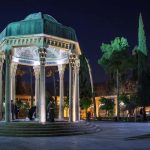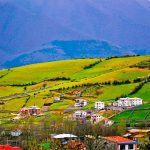Naghsh-e Jahan Square; a splendid fusion of colour, light, and grandeur in the world’s second-largest plaza
Naghsh-e Jahan Square is a prominent cultural and historic landmark in the heart of Isfahan’s old city. For centuries, this vibrant square has been at the heart of the social and cultural events of the city. Stretching over 89,000 sqm, this majestically grand plaza is considered the world’s second-largest public square after Tiananmen Square in China.
Jubilantly named “the design of the world,” Naghsh-e Jahan Square is laid out in a neat rectangular surrounded by two-story arcades with four commanding structures positioned on each side. The Shah mosque occupies the southern stretch of the square, facing the Qeysarieh Portal at the far end of the plaza. On the east is the charming Sheikh Lotfollah mosque facing the grand Ali Qapu Palace. The square is strikingly well-preserved, and its beauty and grand scale charm any visitor.
Naghsh-e Jahan Square was constructed between 1598 and 1629 on the orders of Shah Abbas II to showcase the power and glory of his new empire. Isfahan had always been an important city during the rule of various dynasties, but it wasn’t until the 17th century that the city’s golden age began. Upon taking the throne, Shah Abbas decided to move the capital from Qazvin to a city that was relatively safer and promised better economic opportunities.
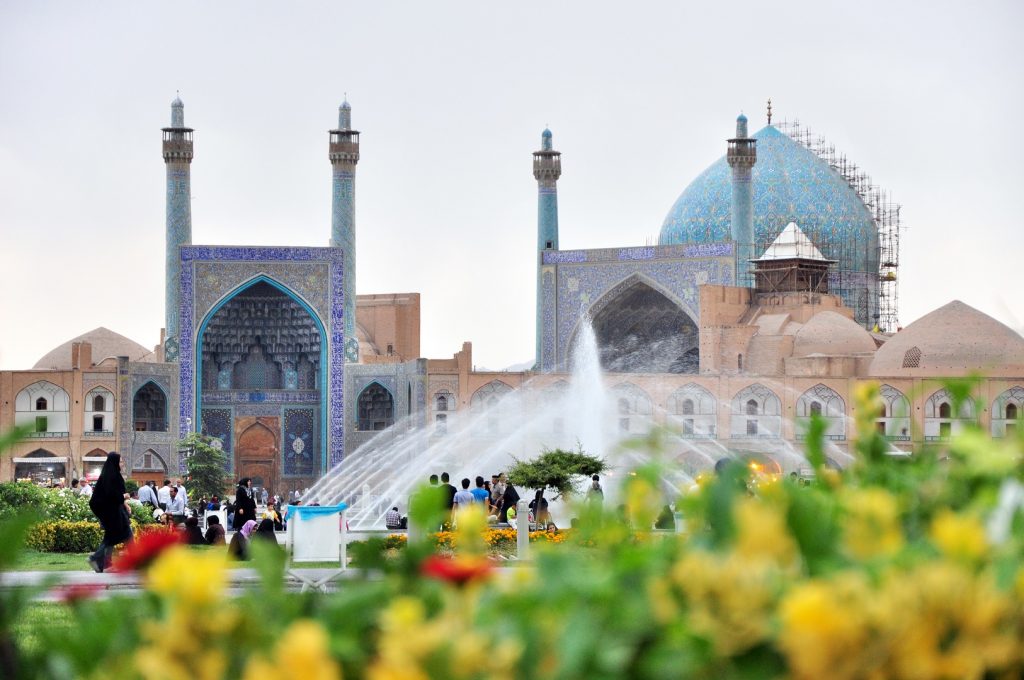
The king established his new capital in Isfahan and vowed to make it one of the largest and most beautiful cities the world had ever seen. He had a vision; to transform Isfahan from a modest provincial town into a splendid capital of social and economic might, unrivaled by any other city in the world. Palaces, madrasas, and mosques were built one after another, with towering domes and minarets quickly dominating the city’s skyline.
On his orders, extensive architectural work began in the city. Artisans, merchants, and missionaries flocked to Isfahan from all corners of the earth, finding homes and opportunities in this new, fast-growing city. This reinforced Isfahan’s status as a prospering cosmopolitan city, drawing foreigners from around the world. The king’s vision and ambition led to the construction of hundreds of grand structures organized around a central square known locally as the Meidan. Of all these structures, only some have stood the test of time; many others vanished altogether. Those remaining structures constitute some of the finest examples of Persian and Islamic architecture.
Being the city’s focal point, the Meidan was initially built as a multifunctional space for hosting state ceremonies, military parades, and annual polo matches. However, with the addition of new structures over the next several decades, Naghsh-e Jahan became the capital’s social, religious, and economic heart and the embodiment of the Safavid polity.
The square was built according to a single harmonious plan, uniting all the elements of the Safavid ideology into one coherent space. Unity became an integral part of Safavid art and architecture. It reflected their efforts to unify various local and regional governments into one mighty empire and to establish a national identity in the country. The structures of the Meidan were used to reflect the main pillars of the Safavid empire; religion, commerce, and royal governance.
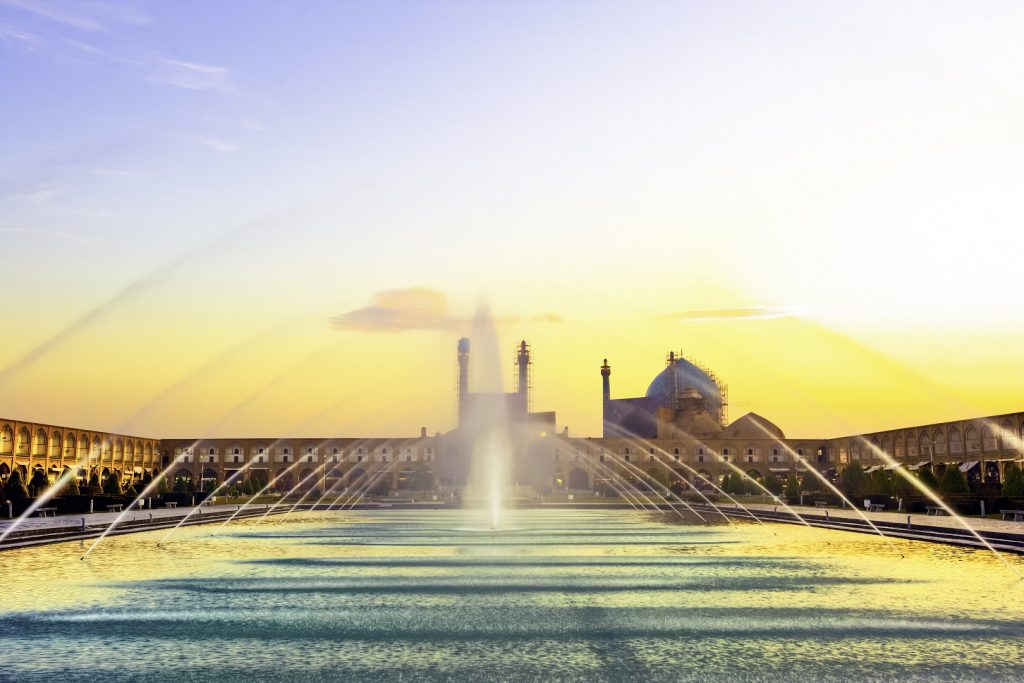
Under the reign of Shah Abbas, Isfahan also became a thriving art scene. The 17th century oversaw a cultural renaissance in Iran, with arts and architecture flourishing under the rule of Shah Abbas, becoming a versatile medium for expression. The Safavids left a lasting mark on Iranian art and architecture. They established colorism and elaborate surface decorations as one of the most salient characteristics of Iranian architecture. Haft-rangi or seven-colored tiles, mirror works, frescos, and Moqarnases dominate the lavish decorations of Naghsh-e Jahan Square.
The views around the square have remained remarkably unchanged compared to how they used to be 4 centuries ago. The only significant change is perhaps the polo field which has been swapped for an ample green space that occupies the middle of the square. The whole of Meidan is a pedestrian zone where you can spend hours strolling around and discovering its splendor. You can also enjoy the lively atmosphere of the Meidan and its gorgeous monuments by taking horse-drawn carriages around the square. You can also spend hours roaming around the Meidan, exploring its many hidden lovely cafes and tiny quaint shops.
As the cool evening air settles in, you will notice local families gathering for outdoor picnics. It’s an excellent opportunity to sit and relax, mingle with the locals, and watch the world go by. At sunset, a serene atmosphere prevails in the square as the soft light illuminates the graceful structures in gentle shades of pink and gold.
Sheikh Lotfollah Mosque

Sheikh Lotfollah Mosque was the first monument built in the new Meidan. Construction began in 1603 and spanned over 16 years. Located along the eastern side of the square, the mosque bears the name of a prominent Islamic scholar, who was highly regarded by the king and was allowed to take up residence in the mosque during his last years. With its gates closed and guarded, the mosque was solely reserved for the royal family as a private place of worship. An underground passageway connected the mosque to the Ali Qapu Palace on the opposite side of the square, making it possible for the king and his family to visit the mosque avoiding encounters with the masses.
At first glance, Sheikh Lotfollah might seem modest compared to the grand royal mosque, but this masterpiece of Safavid architecture is every bit majestic and mesmerizing. The mosque does not follow the typical four-iwan style, and the lack of minarets and courtyards makes it similar to a mausoleum in appearance. The most striking feature of the mosque is its imposing oversized dome, standing 32 meters high. The crown is intricately ornamented with detailed floral designs in white, blue, and black against a light cream background that transforms into a soft hue of pink during sunset, creating a romantic atmosphere.
The entrance to the mosque is through an elevated platform, which leads to the portal iwan delicately ornamented with intricate, colorful tiles and suspending Moqarnases. Stepping through the gate, you will enter a dimly lit hallway. As you make your way through the winding entrance, you can feel a growing sense of anticipation. As you reach the end of the hallway, you are met with the breathtaking sight of the main prayer hall, bathed in divine light.
Upon entering the chamber, your eyes are instantly drawn upwards toward the magnificent dome with its delicate tilework. Light flirts through a line of latticed windows around the dome’s drum, illuminating the haft-rangi tiles in shimmering light. Find a quiet corner and get lost in the ethereal beauty and harmony of the decorations – it is hard not to be moved by the captivating beauty and serenity that surrounds you.
Ali Qapu
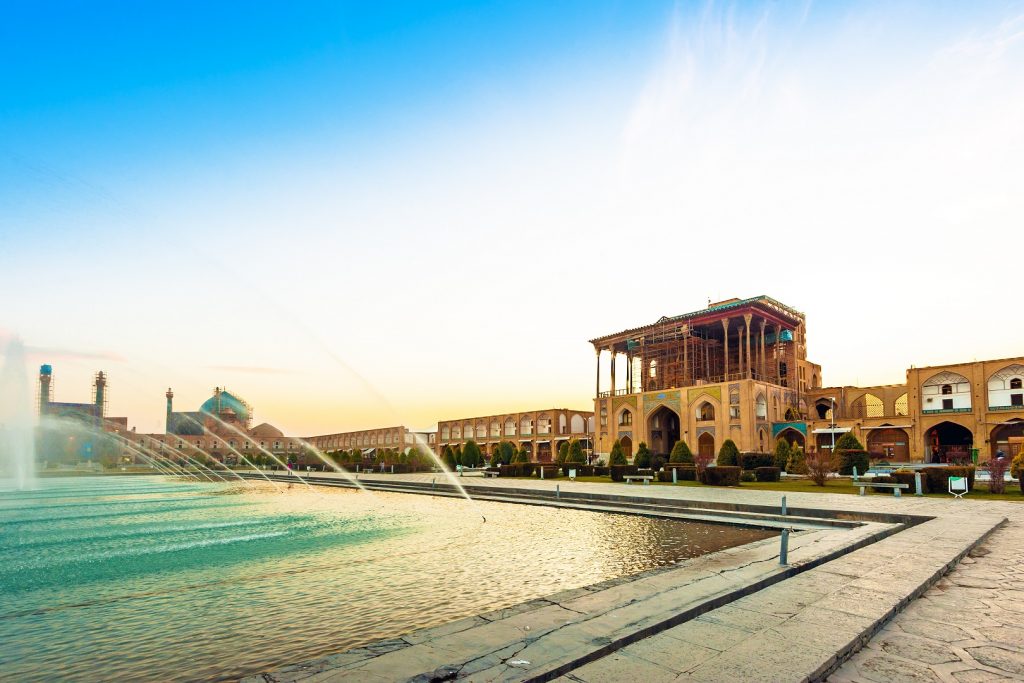
Opposite the Sheikh Lotfollah Mosque is the splendid royal palace of Ali Qapu. Translating to the “Imperial Gate,” the royal residence was initially built as an entrance gate leading to a succession of royal palaces and gardens that lay beyond the square. However, in later stages, the gate was transformed into a lavish royal palace, showcasing the might and grandeur of the Safavid dynasty. The royal court was decorated with great attention to detail; the colored tiles, the wall paintings, and the woodworks were all skillfully used to reflect the sheer magnificence of the empire.
The first two floors of the six-story structure were reserved for administrative workers, officers of the guard, and palace staff. The royal family used the upper floors for residence, royal receptions, and entertainment. The upper floors are accessible via three sets of staircases: the two western staircases are relatively narrow, with steep spiral stairs used mainly by royal staff. The Royal staircase is elaborately decorated with colorful tilework and wall paintings, zigzagging between different floors.
The third floor is, without a doubt, the most fascinating feature of Ali Qapu Palace. Here, the hall opens to a spectacular pillared veranda, supported by eighteen 10-m high wooden columns, intricately decorated wooden ceilings, and walls adorned with elegant frescos in soft shades of orange, green, blue, and grey. The king used this magnificent porch to entertain foreign dignitaries, celebrate national holidays, oversee military parades, and watch annual polo games. Here you can get sweeping views of the Meidan in all its glory.
Moving a couple of floors up, you will arrive at the grand music room. Considered an architectural marvel, art and engineering are merged into one, creating a unique artistic space. Stuccos were a prominent feature of Safavid architecture, and it was here that they were used innovatively to enhance the acoustics of the music hall. The distinctive craftsmanship served as a unique acoustic system, echoing the sound of music around the palace. Delicate holes resembling Persian musical Instruments and flower vases were cut into the walls and ceilings, creating beautiful shapes and designs.
With the Safavid Empire’s fall, Ali Qapu also fell from grace. Neglected, much of the palace’s tilework and frescos were looted and damaged. Today, the palace is the site of ongoing renovations to restore it to its former glory. Before visiting the site, make sure the reception porch and the music hall are open to visitors.
Shah Mosque

The royal mosque known as Shah Mosque is undoubtedly the most dazzling structure in the entire square. Sitting gracefully on the southern edge of the Meidan, the mosque is the absolute realization of the Safavid vision. It was here that the architects’ and artisans’ dream of marvelous grandeur was realized as their knowledge and passion brought into existence one of the most magnificent structures the Islamic world had ever seen. Construction began in 1611, spanning almost two decades before it was completed in 1629, coinciding with Shah Abbas’ last year of reign.
The mosque was laid out in the four-iwan style, found mainly in pre-Islamic palace designs. By drawing on Sassanid architectural traditions, the architects aimed to develop and emphasize a shared Persian identity. The mosque is also unique for its unprecedented use of colorful tiles and ornamentations. The lofty dome, along with its towering minarets, is covered in enchanting shades of blue and turquoise, glistening under the warm sunlight. Haft-rangi tiles with intricate floral designs dominate the dazzling decorations of the inner dome and the courtyards.
The entrance to the mosque is through a 30-meter-high portal, lavishly decorated with magnificent Moqarnases, exquisite tiles, and qur’anic calligraphy. Passing through this glorious portal, you enter the inner courtyard centered around a large pool with four impressive yards occupying every side. It is not easy to enter this space without being overwhelmed by the visual harmony of the overall design; the colors, the space, and the details.
Besides its splendid beauty, the Shah mosque is also considered an impressive engineering feat. The towering 53-meter dome has a double-shelled design with a 15-meter hollow space between the outer and inner domes. This has contributed to the mosque’s intriguing acoustic properties, where sound echoes strongly through the mosque without any means other than mathematical precision and engineering genius.
Qeysarieh Portal

Located on the northern end of the square, facing the Shah Mosque, Qeysarieh Portal is the main entrance to the grand bazaar of Isfahan. This majestic portal was the most important entrance to the Naghsh-e Jahan Square during the Safavid era, connecting the old bazaar to the newly erected square. The grand gateway was built to showcase the city’s wealth and Isfahan’s status as a thriving economic hub.
The gate had three floors; the first two housed trade and administrative offices. From the second floor, you can watch life go by around the square and get stunning views of Shah Mosque standing grandly in the far distance. The third floor, which is non-existent today, housed the Naghar-e Khaneh, where drums were beaten to signal various times of the day and to announce important events such as the start of a military campaign. There would also be live music during national festivities and special occasions.
The stunning gateway was lavishly decorated with colorful frescos and intricate calligraphies depicting Shah Abbas’ military campaigns and scenes from the royal court. Today, these precious paintings are slowly fading away, leaving behind only a shadow of their once vibrant colors and fine details. In recent years, however, there have been attempts to restore the frescos before they are entirely lost.
Passing through the portal, you will enter an enchanting labyrinth of winding alleys with punctured high ceilings, letting in the daylight and fresh air. As the city’s focal point, the bazaar with its mosques, madrasas, and teahouses; was (and to some degree it still is) at the heart of social and economic life in Isfahan. Here you can find centuries-old shops still in business, selling everything from knick-knacks to elaborate handicrafts, exotic spices, and elegant carpets. Let yourself get lost in the maze of passages and shops, watch artisans hard at work in their tiny workshops, and immerse yourself in a symphony of sounds and scents that will dazzle your senses.

